Skies varied from blue to hazy to deep clouds.
of the Old Mission of Santa Barbara,
“Forgiveness: a Time to Love and a Time to Hate.”
All of it was challenging, thought-provoking, convicting, enlarging.
of reflecting theologically on these two very different resources;
I was powerfully reminded today
of how probing and life-changing such reflection can be.
There’s a book about this process and it’s called –
surprise! – “The Art of Theological Reflection,” by Killan & de Beer.
It outlines a methodology for integrating faith and life
by reflecting on an event or experience in these basic ways:
1. Writing a brief, 5 sentence narrative paragraph about something you have read/seen/experienced (we did it about the documentary film; you could do it about anything happening in your life – a movie you’ve seen, a book you’ve read, a conversation you’ve had).
2. Reading what you have written and identifying the primary emotions elicited. Sit with the feelings until they become visceral.
3. Move next to visual images and brainstorm a list of the first pictures that come to mind.
4. Choose one image that best captures the feelings and explore this image by asking these questions, slowly and reflectively:
d. Continue to look at the image in your mind’s eye and ask: what are the possibilities for healing or renewal, either actual or implied? Now, re-read everything you’ve written to this point.
You are now ready for the second set of reflections. This first set was deeply personal – finding an image out of your experience that resonates and touches your own psyche.
In this next section, you are asked to connect with something within the Christian tradition – scripture/liturgy/theological study you may have done. (We did it with the work of de Chardin).
Now, return to the image and allow it to be very present to you. Again, prayerfully brainstorm – this time generating a list of ideas from scripture or tradition that come immediately to mind.
Choose ONE idea from your list to sit with for the same kind of reflection questions you worked through with the image originally:
1. How is God present and calling?
2. Try to ‘get inside’ of the idea you’ve chosen from the tradition and reflect on what life is like there. Jot down what comes to mind.
3. Gaze at your mental image of this idea/verse/picture and ask if there is anything broken or sorrowing there.
4. Finally, ask what the possibilities for healing and renewal might be.
NOW – invite a conversation between the image you selected in the first part of this exercise and the piece of the tradition you have chosen in the second part.
Tension
Re-read everything you’ve written and try to respond to these questions:
1. What emerges for you in the conversation between the image and the piece from the tradition?
2. What insights do you find?
3. What questions are raised for you?
4. Does anything from this conversation shed new light on the narrative you wrote out at the very beginning of this process?
This takes time – but Oh!, the rewards are so rich! I am indebted to Father Steve Coffey for his excellent synthesis of both de Chardin and the Theological Reflection process.This is something I want to do more faithfully, to invite reflection, deep reflection, on the intersections of what I believe with what I experience in the dailyness of life.
It is fascinating to go back and read your original narrative – the writing that spurs the entire process – and see where you end up in the final conversation between personal and traditional images.
Without going into any great detail or discussion on the pros and cons of either the film we viewed or the theology we discussed, I will just say that I began to weep quietly with the first set of reflection questions (which were read aloud to us while we worked individually and quietly – it took about 45 minutes to do it all).
My original narrative had nothing to do with my mom, but the images that came to me centered on her.
And the image from de Chardin’s theology?
expansive view of the Risen Christ as the ground,
meaning and end of all creation.
enclosed by the pulsing heart of a loving Savior –
well, it just finished me.








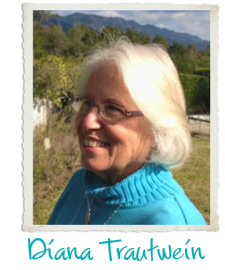
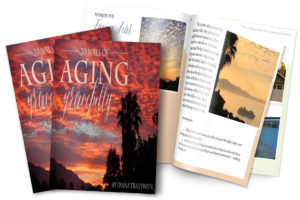
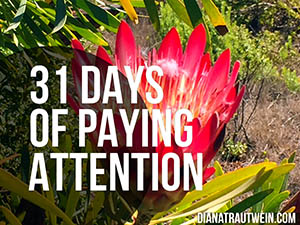

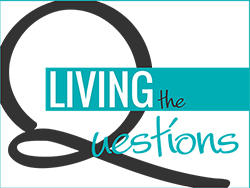

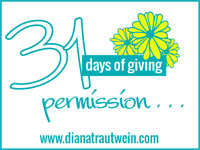

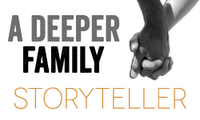









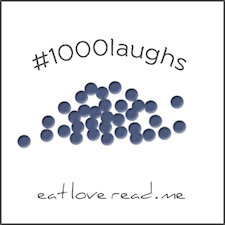

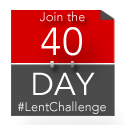

Diana, I appreciate this. Very much. So much so that I’m going to try the practice.
It seems so often that we just want to be through something, move on from it. (What is it that makes me think the next thing will be any better?) But these events of our lives, however painful or however blissful, they all have transforming purpose, if we will allow them. But we have to enter into them, at least to more of a degree than trying to pull the one piece of a 5000-piece puzzle and say, “Oh, I see why God allowed such and such to happen because then that other thing happened and see how it all worked out?” There is that, the greater puzzle of life and how God works the various events together. But there is the experience itself, of all the rich depth of its pain and hunger and joy and love that is in it if we will sit with it long enough to let Him speak fully. Perhaps that all comes back to Buechner’s stewardship of pain (and, I’d add, stewardship of just about anything)?
Diana, thanks for this. For the invitation to look at it, think it through, and for enduring my ramble here. My heart stays with you as you continue to live in the process with your mom, and all that goes along with that.
I feel so thankful that you would share this story and the process of discovering. It is mind blowing to know that those who went before us were so deeply connected to him that they could leave a map of sorts, and be able to retrace and verbally express or write down the labrynth of deeper levels of connecting to him. Not for the sake of complicating things, but to show the true depth and richness of TIME spent with him.
We all talk about taking the quiet moments of reflection to be still and hear God… but I need the literal help of a trusted spiritual director who has gone before me…to walk beside me and hold out their light on the path next to my light… so that I can discover for myself the things that God has individually purposed for me to see, know, hear.
You have done that here, Diana. Thank you for holding out your light and offering this gift to us. I wish I could have been there.
I found myself wishing some of my friends from Laity could have been there, too, Pat. And thank you – and thank you, Lyla, for reading all the way through this! We did this last summer and I loved it then. But – so typical! – I forgot all about it. Re-visiting it all was powerful on so many levels, not least of which is the strong encouragement I feel in my spirit to do this much more intentionally, maybe weekly?
Lyla, I think ruminating on “The Tree of Life” could yield some rich results Actually, ruminating on almost anything we might choose could do the same. Blessings as you try.
Wow, Diana. Love how that Catholic imagery snuck in there! Even more how it became personal for you. And I would think it would help to be away at a retreat, in such a beautiful place to process such deep pain.
I love visiting the old missions. They give such a feeling of peace and serenity. I like just to sit and contemplate on life.
Thank you, Diana, for taking the time to write all of this out. So sweet that the Lord met you, in your pain of watching your mom go downhill.
I was on the Pacific ocean this past week and sat watching … like you mentioned before. I thought of you sweetly as I was there.
I wonder if you could lead us slowly through this process on your blog. (We could all read the same material and work through it together.)
Thanks for pastoring us.
Fondly,
Glenda
Oh my word, Diana, I cannot for the life of me imagine walking through that reflective exercise! Did it take like 2 hours??!! It’s so complex. You lost me about 1/4 of the way through (not your fault AT ALL — I am a distracto…apparently I can’t even read about such a practice, never mind practice such a practice!). I am intrigued, and would welcome the opportunity to try this in a guided setting such as you were in. But I can’t imagine trying this on my own as Lyla suggested she might! Brave woman, that Lyla.
Anyway, I’m grateful for the time you took to walk us through the steps. And I loved your pictures, too — just seeing those flowers and all that green gives me hope for spring. In fact, I scrolled through all your luscious pictures in the last 3 or 4 posts — thank you for taking me on that journey (the horseback rider in the beam of sunlight – oh my that is a lovely one!).
Glenda – I am so glad you’re back out here in the blogosphere. You are always so kind and encouraging. I’ll think on that idea – not sure it would work well with written prompts – hearing the prompts with lots of space to respond works best, I think.
Michelle – Actually, I thought about you this weekend as we did this. Such fresh pain as you’re enduring right now needs a little bit of time to steep before even attempting this kind of intentional reflection. BUT, in a month or two or three, it might be truly rich for you to attempt it. After Easter, I’ll see if I can come up with some way that I might encourage this more practically. No guarantees, but maybe.
We did it after both watching and listening to the same two things – the documentary and the lectures on the theologian. And it took about 45-50 minutes to work through all the questions.
Shanda – I also LOVE the old missions – there is something deeply restful about them, both here in CA and in TX, too.
Megan – yes, I was startled that that was the image that came. Teilhard de Chardin grew up in France and was heavily influenced by the 19th c practice of the Sacred Heart, which was pretty strange, actually. But as he grew as a scientist and as a priest, he completely re-interpreted it and I was just struck by his images. Truly powerful. One of these days, I may actually try to read his long essay, “The Divine Milieu.” But I understand that you need a cliff notes accompaniment to get through it. So I was grateful for the lecture, which really took this complicated stuff and made it very accessible. And you are right, being in this setting greatly facilitated the whole process.
Diana, I loved this! Thanks for sharing. I hope you will lead us all through something like this (as Glenda suggested)! I went through a journey like yours, with my Mom….just wish I had had this internet connect back then!
Blessings~~~
I’ve just finished up planning for my class and so dense is not working for me right now! I’m adding this to my reading list and will be back tomorrow!
“Sit with the feelings until they become visceral.”
Wow. I can’t imagine how I might understand my God, myself (and my world) more clearly if I would just sit a spell and do that. It feels so scary, so I tend to pack it away before it becomes too visceral.
Scared as I am, I would like to try this. Thank you for sharing this, friend.
I wonder why we are so frightened by our own emotions? Because most people I know really are. I think maybe we feel like they’ll devour us and we’ll disappear? At least that’s how I used to feel. It’s taken me time and a whole lot of work – and regular experiences of God’s grace – to realize that emotions are important messengers of what’s going on inside of us – but they won’t kill us if we let them out for a bit. And in this particular exercise, that is one of the key pieces in letting the images come forward – to just sit with the feelings for a bit – and it doesn’t actually take too long to do this part. And you know what, jennifer? It’s pushing through the fear and trying things anyway that really helps us grow. So you grow, girl!